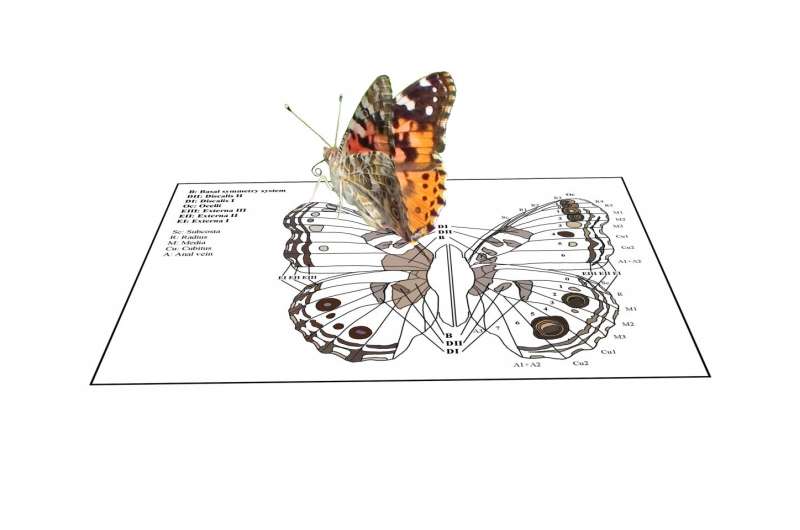Credit: University of Manitoba
The Shirley Richardson Butterfly Garden at Assiniboine Park is testament to our fascination with the colourful insects that bring delight to so many. The beautiful patterns and pleasing textures of their wings attract not only park visitors but also play a role in butterflies' own mating and courting rituals, and warn predators of a foul taste should they partake of the fluttering creatures.
The secret to how butterflies (scientific name: Lepidoptera) create such striking arrays has been partially solved by new research by scientists at the University of Manitoba in Winnipeg, Canada. They have figured out the genetic code by which butterflies assign colour patterns to different part of their wings during development.
"This research provides a key piece to the puzzle of how butterflies have managed to produce such a diversity of colour patterns," says biologist Dr. Jeffrey Marcus in the Faculty of Science. "We now have insight into the genetic mechanisms that determine how many eyespots are made on each wing surface, their positions on the wing, and whether a species makes uniform or variable eyespots."
Marcus and his former graduate student Roohollah Abbasi discovered that during the transition from caterpillar to chrysalis, butterflies use a common set of transcription factors (codes that turn genes on and off) that create several developmental compartments in their wings. Prior to their work, it was believed there were only two such wing compartments, but Marcus and Abbasi have shown that both butterflies and flies actually have three compartments in each wing.
Marcus says: "We found a previously unknown, but critical component of the system that patterns the anterior-posterior (or "head-to-tail") axis of butterfly wings. It is a compartment boundary: a barrier that prevents cells from moving across an invisible line within a tissue during development in the posterior part of the wing. It's responsible for organizing the veins and colour patterns that occur there and in cells in the surrounding region. We have called this new boundary the far-posterior compartment boundary."
Abbasi adds, "Our studies allowed us to synthesize a new hypothesis for 'genetic addresses' responsible for directing the placement of eyespots and allowing them to be similar or different from one another on a single wing surface."
The ability to produce diverse colour patterns has significant consequences for the ecology of butterflies, which use these patterns to select mates, for camouflage, and to avoid or intimidate predators. It is in part because of this capacity to produce colour pattern diversity that so many beautifully different species of butterflies have evolved.
Furthermore, the work by Marcus and Abbasi was unusual in that it focused on butterflies rather than fruit flies, which are most commonly studied by insect biologists. However, four decades of research on insect wings failed to find the compartment just discovered.
"In butterflies, we can use the colour patterns as landmarks, making the underlying developmental architecture of all insect wings more obvious," says Marcus.
The research has been published in the Nature journal Scientific Reports.
Journal information: Scientific Reports
Provided by University of Manitoba























